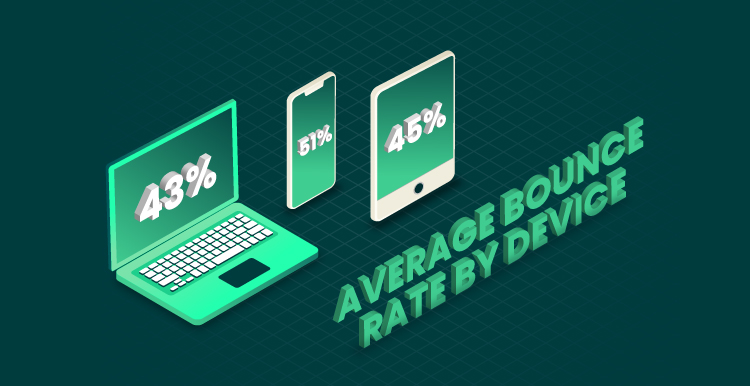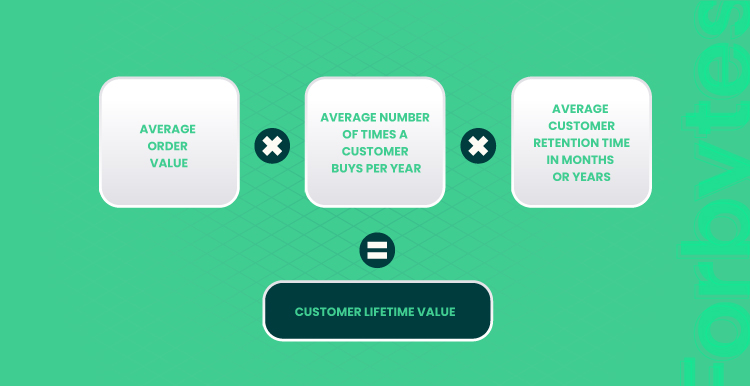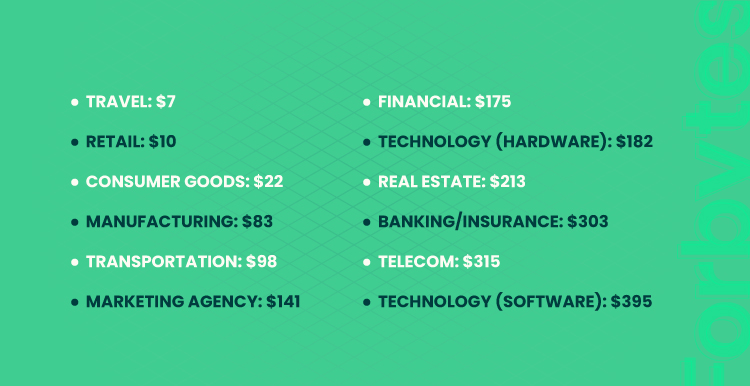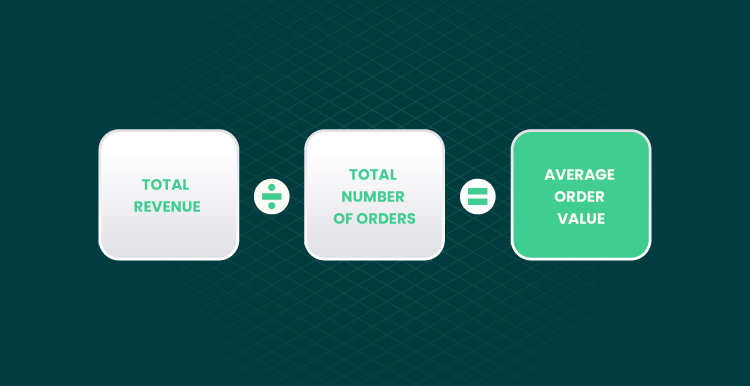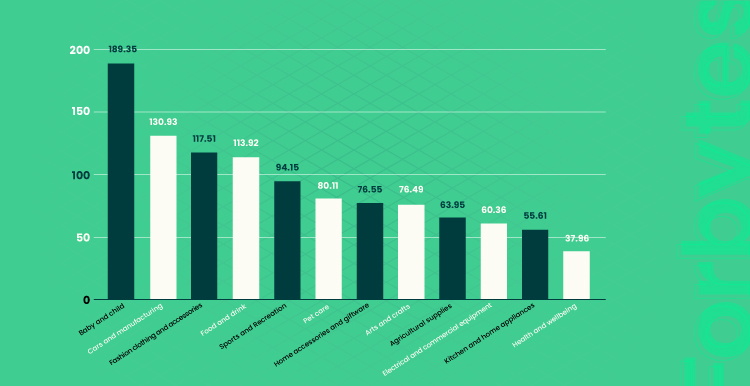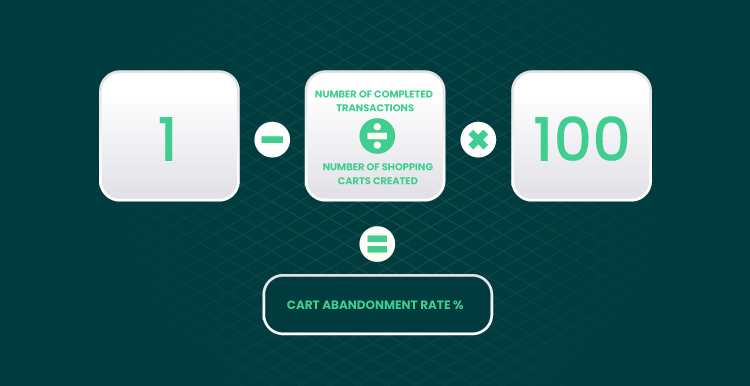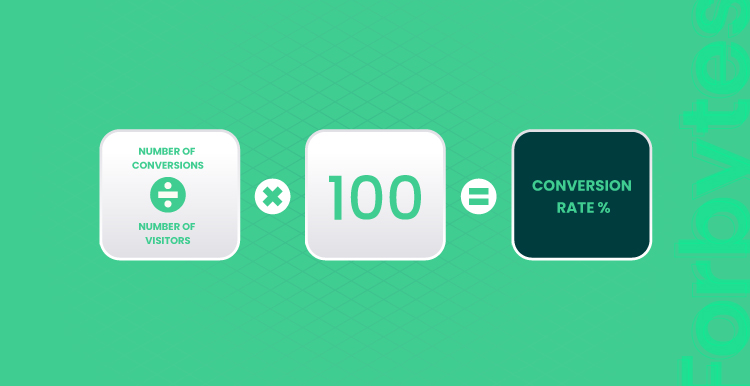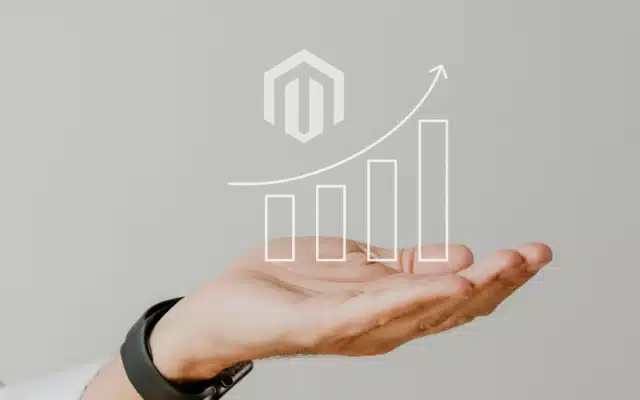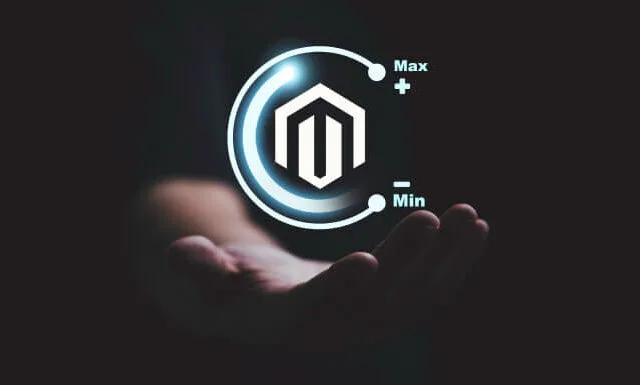On the one hand, running an eCommerce site allows you to make data-driven decisions instead of relying on gut feeling. On the other hand, it is easy to be overwhelmed by having all ecommerce data at your fingertips.
To ensure that you can measure ecommerce success and know where to look for the data, we will discuss key e-commerce KPIs and their functions.
Ecommerce KPIs. Definition and Functions
A key performance indicator (KPI) is a metric that indicates how well your eCommerce site performs. Without tracking your eCommerce KPIs, it will be difficult to determine if you are making progress over time. The choice of key performance indicators in retail depends on what aspects of your business you want to track at the given time. For instance, customer support and marketing will look at the different metrics to analyze the effectiveness of the applied engagement tactics. Similarly, different businesses will rely on different e-commerce metrics.
Nonetheless, tracking an e-commerce KPI gives you the following:
- You are aware of how things are going. Figures reflect your progress and are the outcome of your effort.
- You can see how changes (positive or negative) affect your business. It allows you to get more control over the situation, no matter the reason for the changes.
- You detect weak spots and gaps in your website. If you see that your users quit the e-commerce store on a particular page more often compared to others, you know that this page has some issues and needs to be improved. In other words, if you manage and analyze data, you know where to look for clues.
- You can generate insights and find ways for improvement. With clear numbers, you can easily move from “I think that” to “Figures show that” to make more informed business decisions.
In the following sections, we will discuss three categories of metrics that determine e-commerce success.
Website Metrics to Track
Top e-commerce KPIs are vital for your e-commerce website visibility. Website metrics form the ground for raising e-commerce sales. So, you should pay close attention to their performance. Here are the key e-commerce metrics to consider:
Traffic Source and Type
Website traffic is one of the e-commerce KPI metrics that denotes the number of visitors to your e-store. You can analyze the website figures in general or review how separate pages perform. To grow organically, you need to regularly produce content on your website. But don’t limit your content just to product descriptions or sale messages. A good way to start improving your e-store is to share useful and unique information with your users. This, for example, can be done in the news section updated once a week, or the blog section where the long-read articles are published. By publishing informative content, you get many benefits. Some of them are:
- You increase your company’s visibility on the Internet. This means that you get good chances to be ranked high on Google and to be visible to your target audience.
- You improve your brand by keeping your users updated about your news, improvements, and achievements. In other words, you show your existing customers that you care about them.
- You offer help to others. By sharing the industry insights and experience in your posts, you are helpful to those looking for help. You become a part of the growing community of businesses that promote self-education and growth.
Your website visitors can be classified into unique and repeat. Depending on the product you sell, these figures can be more or less important. If you sell low-cost goods, people are more ready to buy the first time they visit your online store. However, if you sell expensive products, your customers will tend to visit your website multiple times before committing.
Also, your visitors may come from different sources. Here are the main:
- Organic search. You are ranked in search engine results based on the keyword-saturated content of your e-store. The better SEO optimization, the higher the traffic.
- Ads. Paid ads are a great way to start promoting your online store and earn more repeat customers. Goodge AdWords will help you with your first steps in paid advertising.
- Social media. Nowadays, social media presence seems to be a must for a business. By growing your social media pages, you set a friendly connection with your audience. Evidently, a great part of your traffic may come from your social media channels.
- Email marketing. Pointless spam messages no longer work. However, if you want to try your luck, you should be ready for 2 likely scenarios. First, a more positive scenario: you will simply be ignored by a user. Second: you will end up on the block list, and all your messages will be filtered into the spam section by the email service itself. There also is a third scenario: your email marketing will be catchy, personalized, informative, and truly useful to a client. In this case, email newsletters are a great method for attracting an audience.
You may ask, “How can I generate more traffic to my e-commerce store?” The answer is, that the mentioned channels can help achieve this goal. Nurture users on each channel to increase the frequency of their website visits. Update information, share news, and be useful to your visitors — all this will help you attract both new customers and returning clients.
Organic Search Rankings
Organic search rankings ensure that a user entering a particular keyword combination sees you in the search results. Of course, you will not be able to rank top for every keyword associated with your industry. Still, your goal is to make sure that your website is visible on Google thanks to the keyword-driven content generation strategy. This will require you to apply marketing, analytical, and management skills and look at your product through the eyes of a user. If you were your client, what search queries would you use to find the needed product? The answer to this question is the basic level of SEO awareness. Here are the next steps to be done:
- Form URLs properly. URLs are generated automatically based on the page titles. But if the titles are too long, the generated URLs look too complicated. Keep URLs clear, short, and keyword-focused.
- Integrate keywords into your content. Google’s Keyword Planner can help you define powerful keywords and analyze their popularity in different countries. Target high-volume keywords with medium difficulty. They’ll give you more chances to be at the top.
- Add meta titles and meta descriptions. These two are like a shortened title and a brief explanation of what the given page is about. In other words, it’s a preview of your page that visitors check to decide whether to proceed with viewing it.
- Add ALT tags to images. Alternative tags are displayed when an image cannot be rendered. They play an important role in SEO since Google uses them as the additional information defining the content of your web pages.
For the best results, you need an SEO specialist or an SEO-optimization tool that will assist you in producing Google-friendly content and optimizing it for the requests of your target audience.
Time on Site and Pages per Session
These are two different eCommerce KPIs, but they go hand in hand. Time on site is, as you have surely guessed, how much time the average visitor spends on your eCommerce website. Pages per session tell you how many pages people visit on average. The rule is simple: the higher the time on site and the more pages per session — the better. The golden standard is 2 pages per session for most sites. As for time per site, recent statistics show that users spend nearly 5 minutes on retail websites and reach them via desktop, mobile, or tablet. Yet, the optimal time on site and pages per session may be different in each case and depend on your website and page structures.
To grow these key performance indicators, we recommend the following:
- Reproduce the user journey step by step. It will help you detect the places where your users stop viewing the website and quit.
- Keep your website design laconic. Minimalistic designs always look relevant and allow users to focus their attention not on the visual look but on the key actions you expect them to perform. Also, the laconic approach to UI/UX design services enables you to emphasize CTAs with engaging elements, while other parts of the page will be in the background. Check the article about the top 7 UX trends for more.
- Make your web pages readable. Do not overload your users with endless texts — mix it with high-quality images, videos, and attractive design elements. Make sure that all your pages are well-optimized for mobile and look attractive on any device and screen.
- Add navigation clues. Apart from the call to actions that lead to the core services/product pages, you need to leave navigation clues for your audience. These, for instance, can be buttons like “Read more” or “Swipe up for more,” etc.
Bounce Rate
Bounce rate is the percentage of visitors that leave your ecommerce website after vising one page. That is, a user has no interest and motivation to go to other pages and prefers to “bounce.” You should not be afraid of high bounce rate metrics. As the statistics show, the average bounce rate of an e-commerce website is nearly 47%. Yet, if your bounce rate is bigger than 55%, it’s a sign that you need to look for ways to improve it.
Here are some common reasons for high bounce rate:
- You are targeting the wrong audience. If your marketing effort is targeted at the wrong user, the bounce rate will be inevitably high. You need to pursue quality, not quantity. A clear picture of your user persona will help you find the right engagement tools for each user category.
- There are some issues with your website. Maybe, the problem is that your website has poor navigation or design. Or there is a problem with load speed and technical aspects.
- Your content or call to actions (CTAs) are irrelevant/ineffective. The content on your ecommerce website should not only sell your products but also be informative to your customers. Users expect you to be useful for them even in cases when they are not going to buy from you. Meantime, if a problem is linked to your CTA, it may be that this element blends in with other sections of the website and customers do not see it. Or, your users are not interested in the action encouraged in your CTAs.
To calculate bounce rate, take the number of one-page visits and divide it by the number of website entries.
To track the changes in bounce rate, use Google Analytics tools. What can be done to improve this e-commerce metric? Formulate an assumption and launch A/B testing to see what changes work for your visitors. For example, you have 2 designs for a call to action and cannot decide which one is better. Add the first design of CTA to some pages and the second design to other pages and analyze user behavior in each case. What option attracts their attention more and generates more clicks? By answering such questions with the help of Google Analytics, you will see the ways to reduce the bounce rate.
As you see, there are no universal solutions to high bounce rates. The best way is to test your assumptions in practice. But here are some general tips on bounce rate reduction:
- Learn by numbers. Whenever some changes occur, you can check their effects on your website by analyzing the numbers in analytics tools.
- Strive for an unforgettable user experience. Your client should feel comfortable, secure, and engaged on your website. It increases the chances that you will outstand your competitors.
- Improve your website as you grow. Keep your ecommerce store responsive and intuitive and make sure that it can handle high traffic. Invest in your e-store improvements to keep pace with trends in the market.
- Use visuals and interactive elements. Do not forget to appeal to client emotions to increase your repeat customer rate. Visiting your e-store should be a two-sided experience where your clients set a connection with you and feel your attention and presence.
eCommerce Metrics to Measure Sales
Here are ecommerce metrics that are directly linked to your revenues. While other metrics analyze behavior from the perspective of the Internet user, e-commerce metrics study it from the viewpoint of a customer. These are the aspects to be tracked:
Customer Lifetime Value
To see the whole picture, you need to stop treating your customers as one-time visitors. Everything depends on the products you sell, but anyway, you need to strive to increase customer lifetime value (CLV) to your business. What’s CLV? This is one more e-commerce KPI that allows you to see how much revenue you will get from one client throughout their relationship with your brand. To get this figure, you need to do the following:
For example, a client spends 75$ on average on your ecommerce website. Each year, they place 3 orders and keep ordering goods from you for 3 years already. That is, your average customer lifetime value is 75 x 3 x 3 = 675$. While calculating CLV, keep in mind that these figures are relative and do not reflect the real situation for each client. Still, they may show you a tendency. Here are some tips on how to increase your customer lifetime value (CLV) and generate more repeat purchases:
- Invest in client retention. In ecommerce, a positive change in one metric has an effect on the rest of the KPIs. Boosting customer retention rate will automatically lead to higher client lifetime value.
- Offer client loyalty programs. Loyalty programs serve as an additional motivation for a customer to stay with you for longer and buy from you again. The main idea behind a loyalty program is to reward those who buy from you multiple times.
- Use social media marketing. If used wisely, social media marketing can regularly remind your customers of your business and encourage them to make orders. Still, do not overload your clients with pointless spam messages — your strategy should be designed in a creative and engaging way.
Customer Acquisition Cost
Your customer acquisition cost (CAC) is the amount of money you spend to acquire a new customer. You calculate your CAC as follows:
CAC is known as the “startup killer metric” since many companies rush into paid marketing campaigns that bring little return. Their customer acquisition cost is too high, which does not allow the company to survive. Soon, such ecommerce businesses run out of budget and fade. If you see that your CAC is increasing over time while your revenues do not, you need to look for more effective ways and tools to attract the audience.
What CAC is considered a norm? The answer depends on multiple factors. Here is the table of the average value of CAC across industries (remember that these figures are relative):
To improve this metric, you need to:
- Prioritize a particular segment of your audience. Targeting effort at the general audience is not effective as the e-commerce competition grows daily. This is why you need to focus on a particular buyer persona when developing a marketing strategy. By doing so, you will manage to use personalized tactics and appeal directly to your potential client.
- Retarget your users. You can retarget the audience who leave incomplete actions on your e-store. The reasons for such a notion may be different, but lack of clear direction is definitely on the list. Thus, by retargeting your users, you refresh their activity on the website and encourage them to finish the processes they’ve started.
- Automate marketing effort. Marketing automation tools can be integrated into CRM solutions to lower CAC. Client contact details can be utilized in building customized engagement tactics. Sharing educational content with clients can be a price that you can pay for client acquisition instead of paying more money.
Average Order Value
The average order value (AOV) is relatively easy to calculate. This is the average cost of an order on your website. To define your AOV, divide the cost of total sales by the number of total orders. Remember to take these two figures from the same period. How to know whether the result is good or bad? There is no such answer because the figures vary from industry to industry. Everything depends on your target audience, the product price, and the seasonality.
When comparing your results with others, do not forget about the disparities across industries.
Also, remember to track AOV across different channels and devices. For instance, the average order value from direct navigation may be significantly higher than from e-mail marketing. The following tips may help you raise this metric:
- Set the minimum sum for free shipping. This will encourage your users to add a few more items to their shopping carts and get free delivery.
- Offer personalized promotions and sales. For instance, a user can order 2 products and get the third for free. Or they can get a 30% sale for making the next order within 2 days after the purchase.
- Apply upselling and cross-selling. Try to use these methods on your ecommerce platform. This can not only help you earn more but also let your clients make the right product choices. Product suggestions should be made from the perspective of a client, not a business person.
- Launch limited-time offers. These are the low-price offers that are limited in time. The use of this method adds more confidence in client purchasing decisions.
Shopping Cart Abandonment
Even an abandoned shopping cart tells a partially positive story – your visitor was interested in your product. Now you have to investigate why that interest was not enough for the visitor to become a customer. On average, eCommerce websites see a shopping cart abandonment rate of nearly 70% according to Baymard Institute. You can calculate your shopping cart abandonment rate with the following equation:
There are many reasons why customers bail out at the very last step. It may be due to shipping costs, payment methods offered, or a complicated checkout process. Take the time to ensure that the checkout process is short, smooth, and, most importantly, that it works.
Slow-loading websites test the patience of your visitors. If they have to wait for several seconds on multiple occasions during the checkout process, you are going to see an increase in abandoned carts. It is also important to ensure that the mobile version of your eCommerce website loads quickly and is easy to use. In our fresh article, you will find tips on how to improve shopping cart abandonment — so check it out.
Conversion Rate
Your eCommerce conversion rate is the percentage of your website visitors that took a specific action. This can be signing up to receive your newsletter, downloading a file, or making a purchase. It is one of the best KPIs for measuring the performance of an eCommerce business and the clearest sign that you have successfully marketed your product. The following formula will let you calculate your sales conversion rate:
Keep in mind that the average conversion rate varies greatly across industries. If you want to improve your conversion rate, consider the following:
- Are your prices significantly higher than your competitor’s?
- Is your website running smoothly without errors?
- Can you make your eCommerce website more user-friendly?
- Do visitors buy your products in the brick-and-mortar store after viewing them online?
Even small improvements in eCommerce conversion rate can lead to big results, especially if your website sees a lot of traffic.
Customer Satisfaction Metrics
Not always, customer satisfaction can be measured by numbers. Sometimes what matters are the words describing your service and the qualitative description of the experience your user gets. This is why you need to look at your KPIs for ecommerce from the perspective of the end user. Here are some of the aspects that may help you with this task:
Client Reviews
Client reviews are an important source of information about your business read not only by you but also by your potential customers before they make a decision. Even if you have automated ecommerce tools at work, do not forget to involve human creativity and brainstorming while managing data. That is, when having a spare minute, look at your business through the eyes of a customer. What do they say about you on social media and how effective your social media engagement is? What reviews do they leave on Google? How do they evaluate your company and how many stars do they put? By analyzing this information, you may find useful insights that will help you provide a better service to your audience.
Net Promoter Score
Net Promoter Score (NPS) measures the loyalty of your customers and their readiness to recommend your services/products to their partners, colleagues, and friends. To get data, you need to ask one direct question: “How likely are you to recommend us to other people from 1 to 10?” Depending on their answers, your customers can be classified into the following categories:
- Detractors (rated you 0-6). This Net Promoter Score shows that clients are unlikely to recommend you to others.
- Passives (rated you 7-8). Passives will likely stay indifferent to your business and will not recommend it to their peers.
- Promoters (rated you 9-10). This category of customers is very likely to promote your company in their social circles, provided their feedback is honest.
Support Tickets
How many customers created support tickets? How long do customers have to wait before they get help? If a client has to wait for days before the issue with their product is amended, it won’t matter if you provide a new product free of charge. You need to ensure personalized support for your audience to retain more clients and increase customer loyalty. To ensure instant response to client requests, consider chatbots or conversational AI integration.
If you want to find ways to improve customer satisfaction metrics, check out the following video. It explains how to achieve better results by adding consistency to the interaction with your audience:
How Can I Use It All in Practice?
E-commerce KPIs provide you with objective information. But it is up to you to interpret the data and determine what actions can be taken to improve on the basis of ecommerce analytics. Some eCommerce platforms track important data for you. However, it is always good to have a neutral source to compare data and ensure its reliability.
You should monitor the most important ecommerce metrics on a regular basis. It is also important to consult them before making decisions about elements such as search engine or conversion rate optimization.
Remember: you cannot improve the things which you do not measure. The ecommerce metrics mentioned can make your success predictable, controllable, and data-driven. If you need help with ecommerce development, optimization, or improvement — we are always here to prove our team’s expertise and dedication.

Our Engineers
Can Help
Are you ready to discover all benefits of running a business in the digital era?

Our Engineers
Can Help
Are you ready to discover all benefits of running a business in the digital era?




